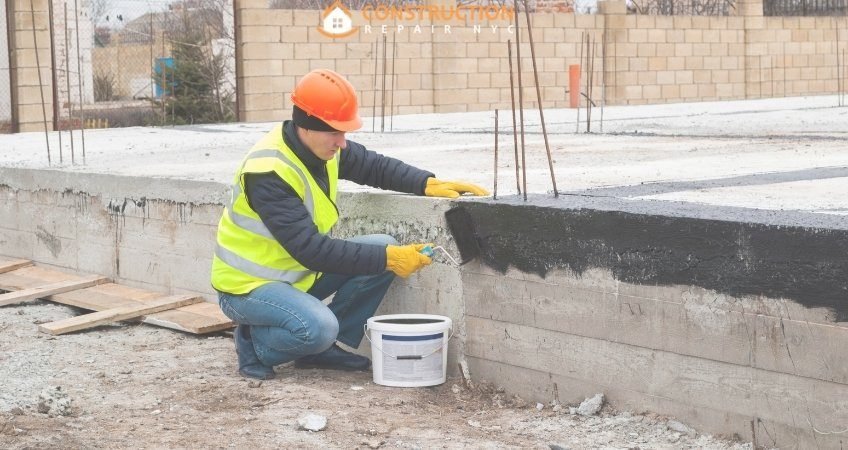Water is relentless and once it squeezes into your basement, crawl space, or foundation, it doesn’t quit until the damage is done. People often assume waterproofing is the same everywhere, but Brooklyn and the Bronx each throw their curveballs into the mix. So, how do waterproofing contractors in Brooklyn and waterproofing contractors in the Bronx handle the unique quirks of their turf? Let’s peel back the layers and see what’s going on. Because when it comes to water, it’s better to fix the roof while the sun is shining.
Local Factors Affecting Waterproofing in Brooklyn and The Bronx
No two boroughs are exactly alike, especially beneath the surface. Local soil, weather, and the way buildings were put together decades ago all play a big role in how water behaves and where it sneaks in. Let’s break it down.
Soil, Bedrock, and Groundwater
Brooklyn is built on sandy soil, sometimes mixed with clay, and in certain spots, groundwater sits closer to the surface. The Bronx, on the other hand, rests on hard schist bedrock.
In Brooklyn, the softer ground has a habit of shifting and settling, which cracks walls and lets water leak through. On top of that, shallow groundwater can push hard against foundations, trying to force its way in.
Over in The Bronx, the bedrock is steadier, which helps prevent major shifting. But it’s a mixed blessing because digging through solid rock to install drainage systems or sump pits costs more and takes longer. And when cracks form in that bedrock, water can travel through the fissures like it’s following secret underground tunnels.
Climate and Storm Patterns
Both boroughs get slammed by Nor’easters and summer thunderstorms, but small differences in geography change how that water behaves.
Brooklyn’s closer to the ocean, and that means salty air and higher humidity, which chew away at concrete and cause waterproofing membranes to break down faster than you’d think.
In the Bronx, the inland location spares it from salt exposure. But the borough’s hills can create sudden torrents of rainwater barreling downhill, pooling around homes at lower elevations, and putting serious pressure on basement walls.
Architecture and Land Use
History leaves its fingerprints everywhere, especially in how neighborhoods were built. Brooklyn’s older brownstones have shallow basements and share walls with neighbors, making waterproofing a tight squeeze. Contractors there often deal with cramped job sites and strict preservation rules that dictate what materials they can use.
The Bronx leans more toward detached houses and mid-century apartment buildings. Bigger footprints and deeper basements are common, but the borough has another headache: its aging sewer systems that sometimes can’t handle heavy storms, sending water and sewage right back into people’s homes. It’s as awful as it sounds.
Waterproofing Challenges in Brooklyn
When waterproofing contractors in Brooklyn show up to a job, they know they’re not just fighting rain. They’re battling local quirks baked into the borough’s geography and history.
High Water Table
Neighborhoods like Gowanus and Red Hook sit close to sea level, so groundwater naturally stays high. That creates constant pressure against foundations. Contractors in these areas lean on sturdy sump pump systems and specialized waterproof membranes to keep water at bay.
Narrow Access and Historic Buildings
If you’ve ever walked between Brooklyn brownstones, you know how tight those alleys can be if they exist at all. Many homes have no side yards, which means contractors often dig by hand rather than bringing in big equipment. Add historic preservation laws to the mix, and you’ve got a project that demands creativity and precision.
Salt and Humidity Damage
Along the waterfront, salt-laden air doesn’t just smell like the sea. It eats away at bricks, concrete, and even waterproof coatings. Contractors here aren’t just fighting rainwater but the slow chemical assault of salty, humid air.
Waterproofing Challenges in The Bronx
Waterproofing contractors in The Bronx face a whole different set of problems, shaped by the borough’s unique geology and terrain.
Rocky Substrates
The Bronx’s bedrock keeps the ground stable but makes excavation a beast. Carving trenches for French drains or installing deep sump pits means drilling through solid rock, which raises costs and slows progress.
Sloped Terrain
In hilly neighborhoods like Riverdale, stormwater becomes a runaway freight train, rushing downhill and pooling around houses at lower elevations. That water puts serious pressure on retaining walls and basement foundations.
Sewer Capacity Limits
Many older parts of the Bronx have combined sewer systems where stormwater and sewage share the same pipes. During heavy rain, the system can’t keep up. This results in water, sometimes mixed with sewage, backing up into basements. It’s messy, expensive, and smells as bad as you’d imagine.
How Contractors Solve These Challenges
Whether it’s Red Hook’s clay or the Bronx’s bedrock, local contractors have learned to work around the obstacles their borough throws at them. Here’s how waterproofing contractors in Brooklyn and waterproofing contractors in the Bronx keep homes dry.
Tailored Waterproofing Systems
The one-size-fits-all solutions do not work in waterproofing projects. In Brooklyn, tight spaces and high water tables often call for interior drainage systems and vapor barriers. Over in The Bronx, when there’s more room to work, external excavation and robust French drain systems are often the go-to.
Advanced Materials and Coatings
Brooklyn contractors frequently choose products that can withstand salt corrosion and heavy hydrostatic pressure. In the Bronx, flexible waterproofing membranes are crucial. They can stretch over small cracks in bedrock or seal joints where water tries to sneak in.
Precision Equipment and Techniques
In Brooklyn, when machinery can’t squeeze into narrow alleys, contractors pivot to hand digging, mini-excavators, or trenchless methods. In the Bronx, where rock stands in the way, crews use rock drills and specialized excavation gear to carve precise paths without damaging nearby structures.
Choosing the Right Waterproofing Contractor
Here’s where homeowners really need to pay attention. Picking a contractor isn’t just about finding the lowest quote. It’s about choosing someone who understands the quirks of your borough and has the skills to handle them.
Local Knowledge
The best waterproofing contractors in Brooklyn or waterproofing contractors in the Bronx know the neighborhood block by block. They’ve dealt with the same soil conditions, storm patterns, and building layouts countless times and won’t be surprised by what they find behind your walls.
Licensing and Insurance
Waterproofing work often involves digging, concrete repairs, and sometimes even structural adjustments. Make sure any contractor you hire is licensed for the borough and carries insurance that covers the kind of work you’re hiring them for.
Clear Contracts and Guarantees
Good contractors spell everything out in writing: the work they’ll do, the materials they’ll use, and what happens if they find unexpected issues. Especially in older buildings, surprises are almost guaranteed. You want someone who’s honest, transparent, and won’t vanish if things get complicated.
Conclusion
Keeping water out of a New York City home isn’t just a matter of pouring concrete or slapping on a coating. It’s a craft shaped by each borough’s quirks. Waterproofing contractors in Brooklyn deal with salty air, narrow brownstone lots, and high water tables, while waterproofing contractors in the Bronx wrestle with bedrock, steep slopes, and aging sewers.
If your basement smells musty or your walls show damp patches, don’t wait for the next storm to turn a small problem into a big one. Find a local expert who knows your neighborhood and can help you stay one step ahead of water. In this city, water always finds a way, and the smart move is to beat it to the punch.




